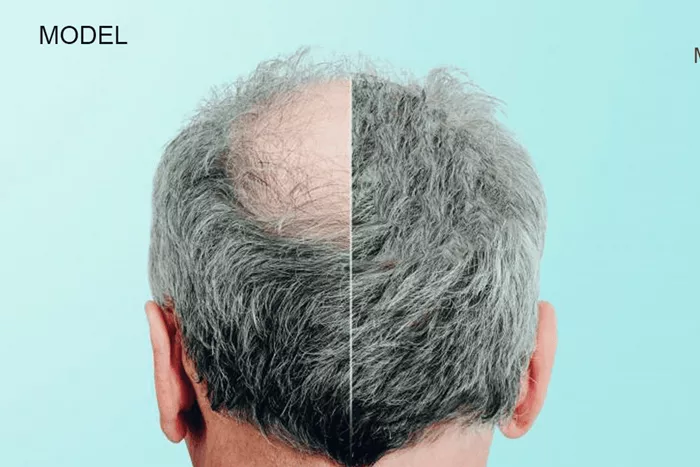Hair loss is a common concern for many people, and finding an effective solution can be a priority. One of the most well-known methods for treating hair loss is the Follicular Unit Transplantation (FUT) hair transplant. But does it really work? To answer this question, let’s explore what FUT hair transplant involves, how it works, its benefits, potential drawbacks, and what you can expect from the procedure.
FUT
It also known as the strip method, is a surgical technique used to restore hair in areas where it has been lost.
The procedure involves removing a strip of skin from the donor area, usually the back or sides of the scalp, where the hair is more resistant to the hormones that cause hair loss. This strip is then divided into smaller grafts, each containing one to four hair follicles. These grafts are carefully prepared and transplanted into the balding or thinning areas of the scalp.
One of the main advantages of FUT is its ability to transplant a large number of grafts in a single session. This makes it an effective option for patients with significant hair loss who need a substantial amount of hair to be transplanted. The procedure is also known for its high graft survival rate, meaning that the transplanted hair follicles are likely to grow successfully in their new location.
The results of an FUT hair transplant can be very natural-looking when performed by a skilled surgeon. The hair follicles are placed at the correct angle and density to match the existing hair, creating a seamless and aesthetically pleasing result. The design of the hairline is also crucial, as it should complement the patient’s facial features and look natural. For many patients, this can lead to a significant improvement in their appearance and a boost in confidence.
Another benefit of FUT is that it is often more cost-effective compared to other methods, such as Follicular Unit Extraction (FUE). Because the procedure allows for the transplantation of a large number of grafts in a single session, it can be more efficient and less time-consuming for the surgeon. This can result in lower overall costs for the patient, making FUT a more affordable option for those with extensive hair loss.
The Potential Drawbacks of FUT
One of the main concerns is the linear scar that is left in the donor area after the strip of skin is removed. While this scar can usually be covered by the surrounding hair, it may be visible if the hair is cut very short. For patients who prefer to keep their hair short or who are concerned about visible scarring, this can be a significant drawback.
The recovery process for FUT can also be more involved compared to other methods. After the procedure, the donor area may feel tight and sore, and there may be some swelling and discomfort. Patients are usually advised to take a few days off work to rest and allow the scalp to heal. Stitches or staples are often used to close the donor area, and these will need to be removed after about a week. It is important to follow the surgeon’s aftercare instructions to ensure proper healing and minimize the risk of complications.
Another factor to consider is that the success of an FUT hair transplant depends largely on the skill and experience of the surgeon. A poorly performed procedure can lead to unsatisfactory results, such as uneven hair growth or a visible scar. Therefore, it is crucial to choose a reputable clinic and a surgeon who specializes in FUT. Taking the time to research and select the right professional can make a significant difference in the outcome of your transplant.
After the procedure, it is normal to experience some swelling, redness, and scabbing in the treated areas. These side effects are usually temporary and subside within a few days to a week. The transplanted hair will initially shed within a few weeks, which is a normal part of the process. The hair follicles then enter a resting phase before starting to grow new hair. It can take several months for the new hair to become visible, and the full results may not be seen until a year after the procedure.
Proper Hair Care Routine
This may include using gentle shampoos, avoiding harsh chemicals, and protecting your scalp from excessive sun exposure. In some cases, your surgeon may recommend medications such as minoxidil or finasteride to help prevent further hair loss and promote healthy hair growth.
For many people, the decision to undergo an FUT hair transplant comes down to the balance between the benefits and the potential drawbacks. While the procedure can provide significant improvements in hair density and appearance, it is important to have realistic expectations. FUT is not a cure for hair loss, and the existing hair in non-transplanted areas may continue to thin over time. Some patients may require additional sessions in the future to maintain their desired look.
Conclusion
In conclusion, FUT hair transplant is a well-established and effective method for treating hair loss. It offers the advantage of transplanting a large number of grafts in a single session, making it a suitable option for patients with significant hair loss. The results can be very natural-looking when performed by a skilled surgeon, and the procedure is often more cost-effective compared to other methods. However, it is important to consider the potential drawbacks, such as the linear scar and the more involved recovery process. If you are considering FUT, it is essential to consult with a qualified and experienced surgeon to discuss your options and determine if this procedure is the right choice for you. With proper care and realistic expectations, an FUT hair transplant can be a valuable investment in your appearance and confidence.
Related topics:
Hair Transplant Surgery: Definition & How it Works
Hair Transplant Surgery Before and After: A Full Guide
Side Effects of Hair Transplant Medication: All You Need to Know


